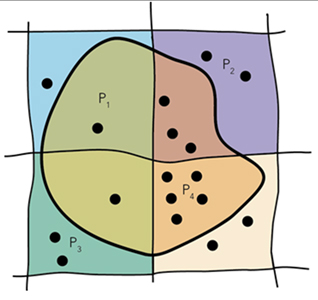On April 27, a severe weather outbreak began impacting the central United States and Mississippi Valley. Strong winds, large hail, and numerous tornadoes were reported. In Arkansas, one particular tornado resulted in heavy damage and numerous casualties. Fatality and injury reports have not yet been confirmed at the time of writing, and the formal impact assessment is underway.
[iframe width=”100%” height=”600″ frameborder=”0″ scrolling=”no” marginheight=”0″ marginwidth=”0″ src=”http://www.arcgis.com/apps/ImpactSummary/index.html?appid=e00a1f6d2b5e40e58e9741831292cd18″]
At the time when the preliminary tornado swath was released, Esri Disaster Response Program staff created this Impact Summary map. The analysis intersects the incident data with the base data to generate an analysis layer. What is significant about this map is the availability of open data, the power of spatial analysis, and the application that represents them.
About the Data
The Arkansas Geographic Information Office made the incident data, a one-mile buffer of the preliminary track, openly available in this web map. While this is not a detailed assessment of where the tornado impact is, it was the best available information at the early stages of the event. Subsequent damage assessment will be conducted by experts at the National Weather Service and field observers on the ground.
The base data includes population, households, businesses and administration, and land-cover data. All these data sources are procured from ‘open data’ available from government data sources, combined with commercially available data from providers like Dun & Bradstreet. For instance, population data is made available from the US Census Bureau, and land-cover datasets are produced by the United States Geological Survey. These datasets are then curated and provided in formats that provide timely and relevant data collections that can be analyzed by organizations using ArcGIS Online.
About the Analysis
The data in the map was summarized using the Enrich Layer tool in ArcGIS Online from a web map. This tool uses Esri’s GeoEnrichment service to add attribute fields to incident data (in this case, the buffer of the tornado’s estimated path) to produce an analysis layer. The GeoEnrichment service uses the concept of a data collection and data apportionment to define the data attributes returned by the service. The service allows people to answer questions about locations such as what kind of people live here? Do they belong to categories typically identified as vulnerable to disasters? And what kinds of businesses are in this area?

About the Application
This web mapping application template, the Impact Summary template, highlights an area and shows a summary of data related to the area. The data presented in the boxes, at the bottom of the impact map, can be any integer data allowing you to answer new questions about locations that you cannot answer with maps alone. In this case, we used the Enrich Layer tool for the analysis. This template is a prototype and was created to present spatial analysis in a way that everyone can understand, which is especially important during disaster scenarios. Combined with open data, we think that this application can be used in a variety of ways to convey the impact of disasters with purposeful web mapping applications.
This template is also openly available to developers on GitHub and for ArcGIS Online users through the Early Adopter Program. Please send us feedback so we can improve this application for the community.
For more information on how the Esri Disaster Program can help during disasters, visit esri.com/disaster.
Esri and the Esri community extends its condolences and heartfelt concern to individuals, families, and communities affected by these storms.